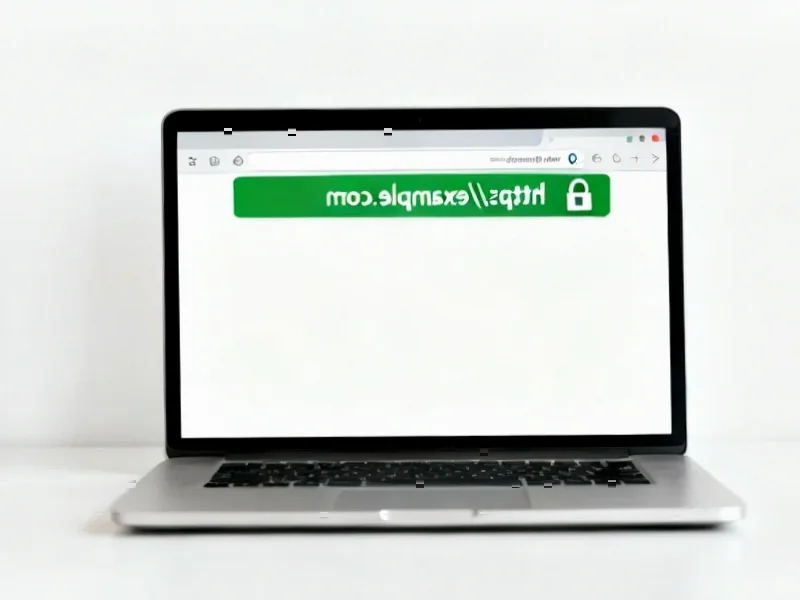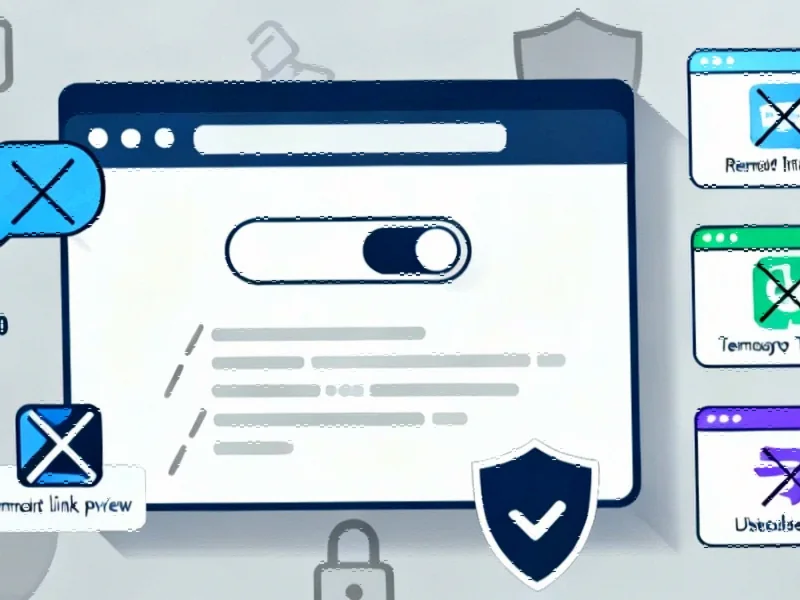According to ExtremeTech, Google Chrome version 154 will enable “Always Use Secure Connections” by default starting in October 2026, marking a fundamental shift in web security policy. The change means Chrome will automatically attempt HTTPS connections for all public websites and display warnings when users try to access non-HTTPS sites they haven’t visited recently. This protection extends only to public websites, excluding private networks and local IP addresses to avoid unnecessary warnings for home or office use. The move comes as HTTPS adoption has skyrocketed from under 50% of Chrome visits in 2015 to approximately 95% today, though Google emphasizes that even brief exposure to insecure connections can enable malware and hacking risks. This represents the culmination of a decade-long push toward universal web encryption that will reshape internet security standards.
Table of Contents
The Long Road to Universal Encryption
The journey to this moment began over a decade ago when HTTPS was primarily reserved for banking and e-commerce sites. What Google is implementing represents the final stage in a carefully orchestrated transition that began with subtle nudges and has now reached mandatory enforcement. The company’s official security blog announcement frames this as completing a mission rather than introducing something new. What’s particularly strategic about their approach is the phased implementation – giving website owners over a year to prepare while simultaneously encouraging immediate adoption through existing settings. This isn’t just a technical change; it’s the culmination of a cultural shift where encryption has moved from optional luxury to fundamental expectation.
What This Means for Website Owners and Developers
For businesses and developers, the October 2026 deadline creates both urgency and opportunity. Websites still operating without proper SSL certificates will face immediate visibility challenges as users encounter security warnings. The distinction between public and private sites is crucial – internal applications and local network resources won’t trigger warnings, but any customer-facing site must comply. This creates a clear deadline for web hosting providers, CMS platforms, and development teams to ensure full HTTPS compatibility. The economic implications are significant: companies that delay migration risk losing traffic and credibility, while security certificate providers and web development agencies will see increased demand for migration services. This isn’t merely a technical checkbox; it’s becoming a fundamental business requirement.
The Limitations and Remaining Vulnerabilities
While this move significantly improves baseline security, it’s important to understand what HTTPS doesn’t protect against. Encryption prevents eavesdropping and man-in-the-middle attacks, but it doesn’t stop malware distribution through compromised but properly encrypted sites. A malicious actor can still operate a fully HTTPS-compliant website that distributes harmful content. Similarly, hackers have evolved beyond simple connection interception to more sophisticated attacks that HTTPS alone cannot prevent. The warning system’s reliance on recent visit history also creates a potential vulnerability window where users might bypass protections for familiar but compromised sites. This represents a major step forward, but it’s not a silver bullet for all web security challenges.
The Ripple Effect Across the Browser Market
Google’s decision will inevitably pressure other browser developers to follow suit. As the dominant player with Google Chrome controlling approximately 65% of the global browser market, their security standards effectively become industry standards. We can expect Mozilla Firefox, Apple Safari, and Microsoft Edge to announce similar timelines within months. This creates a unified front that benefits all internet users but also raises questions about centralized control over web standards. When a single company like Google can dictate fundamental security policies for billions of users, it represents both the efficiency of market leadership and the potential concerns of centralized internet governance. The coming months will reveal whether other browsers match Google’s timeline or propose alternative approaches.
The Future of Web Security Beyond 2026
This HTTPS mandate represents the closing of one chapter in web security and the opening of another. With encrypted connections becoming the baseline expectation, the next frontier will likely focus on certificate transparency, post-quantum cryptography, and enhanced authentication mechanisms. We’re moving toward a web where security isn’t an optional feature but an inherent property of every connection. The 5% of sites still operating without HTTPS represent not just technical laggards but potential security liabilities that will either adapt or become internet ghost towns. For users, the gradual disappearance of security warnings will ironically make the web feel safer even as threats continue evolving in more sophisticated directions. This is less about solving security and more about raising the floor so the entire industry can focus on the next generation of challenges.



